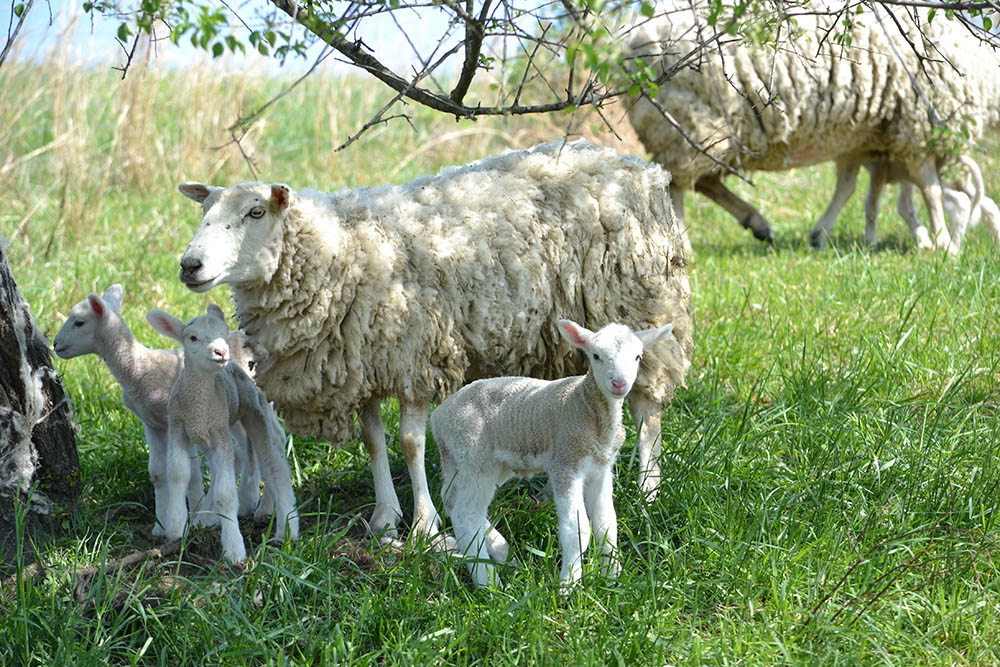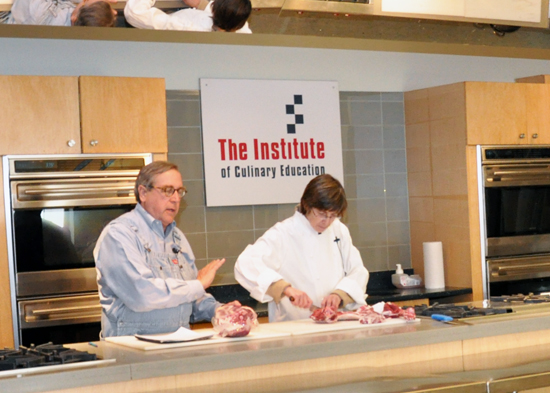John and Sukey Jamison own Jamison Farm in Latrobe, Pennsylvania, where they raise organic, grass-fed sheep.
We met almost 30 years ago when I was the sous chef at Gotham Bar and Grill, where we used their lamb, and I love speaking with them. They tell great stories because they really love what they do and know a lot of the best chefs in the U.S.
John and Sukey were high school sweethearts who left their “regular” jobs and bought a 65-acre farm in 1976. Sukey started a 4H Project raising sheep and used the lamb for her small catering business with positive reaction to the product. Then they brought a larger farm in 1985, when they started a mail-order business.

They were influenced by the introduction of intensive rotational grazing because of the increases in grain prices caused by the Arab oil embargo. This interest led to utilizing the great grass production in their area.
“We have always liked lamb so much because you can raise and finish the animal in a relatively short time of four to eight months solely on grass,” John explains. “The meat from these animals then has a clean and interesting taste directly related to the grasses, herbs and legumes they’ve been eating.”
The Jamisons learned from retail customers, and later from great chefs, that there was a market for the superior natural taste of grass-raised lamb.
John reached out to a chef friend in Pittsburgh and asked if he knew of some chefs to whom he could sell his lamb. One of the first chefs to become a client was the great French chef Jean-Louis Palladin of D.C.’s Jean-Louis at the Watergate. He initially bought the Jamisons’ baby lamb that was still on its mother’s milk for a special dinner he was cooking. The lamb reminded him of the lamb he worked with in France, where he became the youngest chef of a Michelin-starred restaurant.

Chef Jean-Louis compared the lamb to the Sisteron breed in France, which is raised in the lower Alps at altitudes close to that of Jamison Farms. Like Sisteron, the Jamisons' sheep eat a lot of wildflowers and grasses, and the grazing techniques give a subtle taste and texture to the meat that cannot be found with lambs that stood in a feedlot with little movement, consuming a synthetic mix of corn, oats, barley and alfalfa pellets.
Over the years, John and Sukey built up a clientele of prominent chefs across the country while breeding hair sheep ewes, including Dorper, Katahdin and Dorset Horn rams in southwestern Pennsylvania, which they consider “the Napa Valley of sheep production” for its conditions. The lamb’s flavor changes throughout the year: garlicky from wild onions in the spring, sweeter from a wild carrot called Queen Anne’s lace in late August, fatty from cool-season grasses in September. Summer lamb picks up flavors of anise and other wildflowers. The Jamisons’ job is to grow and manage the grass.
I love their lamb because it is not as fatty and greasy as the other lamb raised in the U.S. It has a very clean flavor since it is only fed grass and still cooks up tender and juicy. I’ve used all the parts over the years and continue to use their lamb ribs, racks, loin and legs on my menus at Oceana.

Sukey is a great cook. If you go to the farm’s website, you’ll see many of her recipes, their famous lamb pie (super delicious) available for mail order, and other products, including the couple’s memoir, “Coyotes in the Pasture & Wolves at the Door.” The book features 20 of Sukey’s recipes.
Sukey is also a great butcher, and while grass versus grain feed is an ongoing sustainability debate, butchering the whole animal is an important practice for reducing waste. The couple will join me for a demonstration at ICE’s New York campus on Nov. 13, when Sukey will guide me through how to butcher and use the whole lamb. John will share stories as part of this very important food history lesson that all aspiring chefs will want to hear. There will be plenty of lamb to taste, including a cassoulet, paprika, burgers and some cuts from the butchery demo.
Register to attend the lamb butchery demo.




